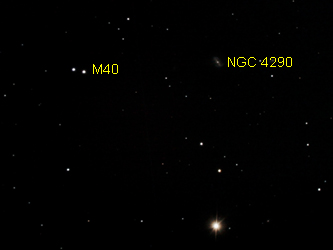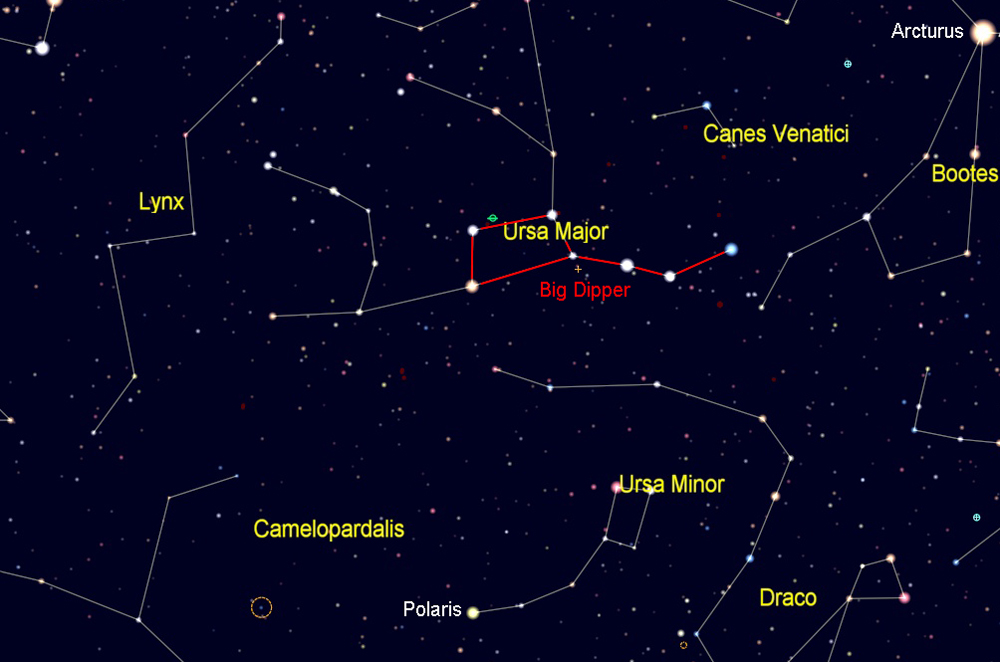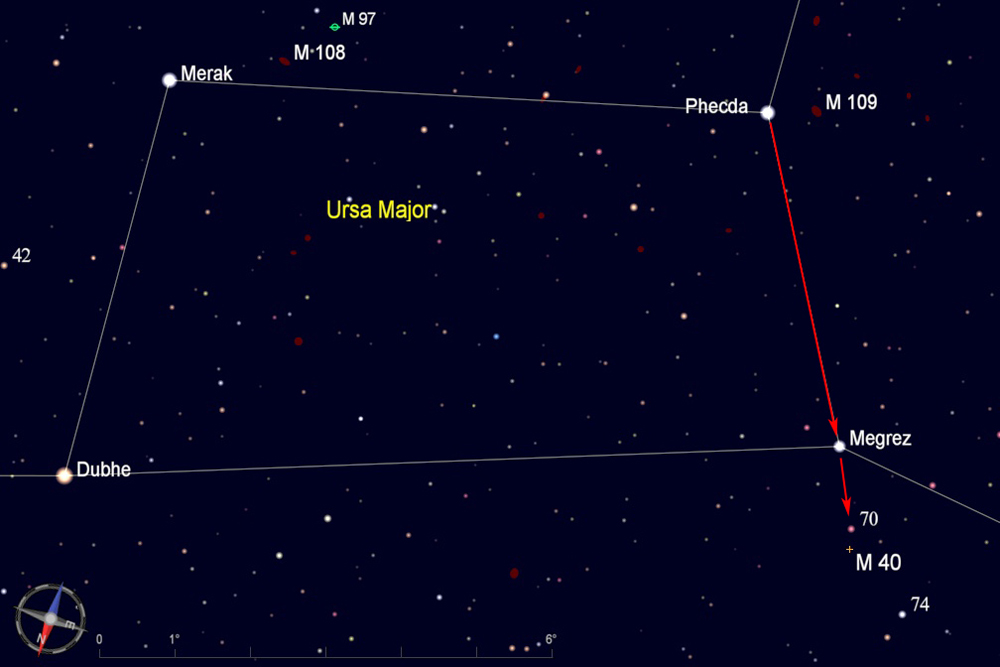| Messier 40 is probably the least interesting of the objects on Messier's list, just a pair of 10th magnitude stars about 50 arcseconds apart. They are probably not even a true double star, but rather a chance alignment of two stars at different distances from Earth. Few observers spend much time looking at Messier 40, but if you want to observe all the Messier objects (and many amateur astronomers do), you will have to hunt down this double star sooner or later. |
 |
| Evening visibility: |
February-October |
| Best viewed with: |
telescope |
| |
Printable chart (pdf) |
View larger image |
Directions:
Start by finding the Big Dipper, one of the most recognizable star patterns in the sky. It is part of the constellation Ursa Major, the big bear. It is shown here upside down, high in the sky above Polaris, which is where it can be found during the evenings in spring and summer. For other seasons and times of night, rotate the chart as needed to match what you see in the northern sky.
|
 |
| Note that north is to the bottom in this chart. Use Phecda and Megrez, the two stars on the inner edge of the Big Dipper's bowl to guide you in the correct direction, and look about 1 degree northeast of Megrez for 70 Ursa Majoris, a star of magnitude 5.5. M40 is just 1/4 degree northeast of this star. If you have a medium or large scope, look 1/5 degree east of M40 and try to spot NGC 4290, a spiral galaxy of magnitude 12.9. |
 |
| Star charts created with Cartes du Ciel |
| |
| |


